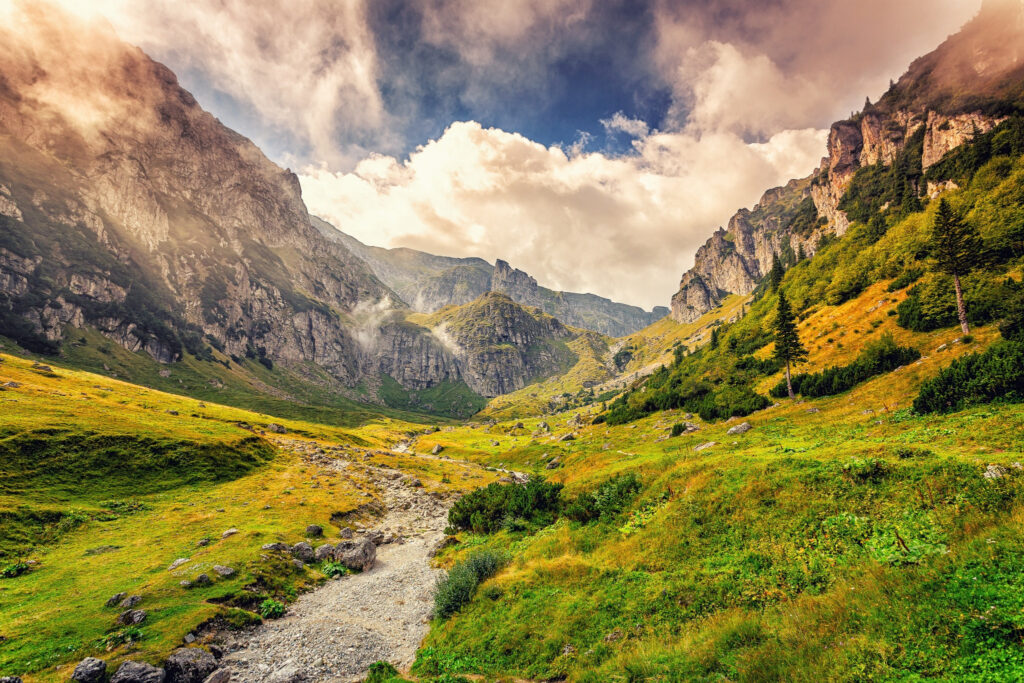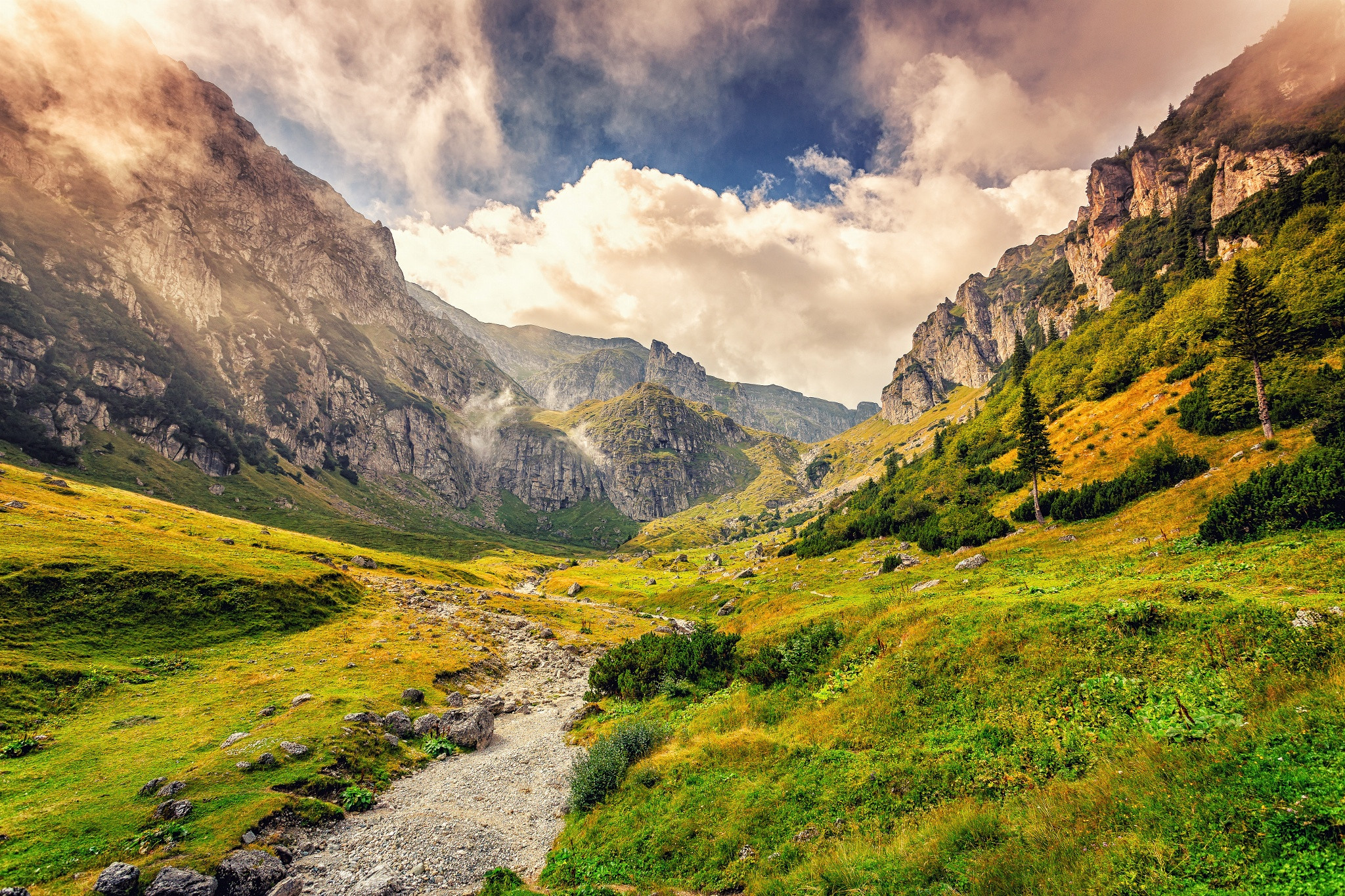
Discovering the Breathtaking Romania Landscape: A Journey Through Natural Wonders
Romania, a land steeped in history and folklore, is also blessed with a diverse and stunning Romania landscape. From the towering Carpathian Mountains to the sun-kissed shores of the Black Sea, this Eastern European gem offers a wealth of natural beauty that captivates every visitor. This article will delve into the diverse Romania landscape, exploring its iconic regions, unique geological formations, and the rich biodiversity that thrives within its borders.
The Majestic Carpathian Mountains
The Carpathian Mountains, often referred to as the “backbone of Romania,” dominate the Romania landscape. Stretching across the country in an arc, these mountains offer a range of experiences, from challenging hiking trails to serene valleys perfect for relaxation. The Carpathians are divided into three main sections: the Eastern Carpathians, the Southern Carpathians (also known as the Transylvanian Alps), and the Western Carpathians.
Eastern Carpathians
The Eastern Carpathians are characterized by their lower altitude and gentler slopes compared to their southern counterparts. This region is known for its extensive forests, rolling hills, and picturesque villages. Hiking here is generally less strenuous, making it ideal for families and novice hikers. The Eastern Carpathians are also home to several important national parks, including the Rodnei Mountains National Park, known for its stunning alpine meadows and glacial lakes.
Southern Carpathians (Transylvanian Alps)
The Southern Carpathians, also known as the Transylvanian Alps, are the highest and most rugged section of the Carpathian range. This region is home to Romania’s highest peak, Moldoveanu Peak (2,544 meters), and offers challenging climbs and breathtaking views. The Transylvanian Alps are also famous for the Transfăgărășan Highway, a winding road that traverses the mountains and offers unparalleled panoramic vistas. The Bucegi Mountains, another prominent feature of the Southern Carpathians, are known for their unique rock formations, including the Sphinx and Babele.
Western Carpathians
The Western Carpathians are characterized by their diverse geological formations, including limestone caves, deep gorges, and volcanic peaks. This region is less densely populated than the Eastern and Southern Carpathians, offering a more secluded and wild experience. The Apuseni Mountains, a part of the Western Carpathians, are particularly known for their karst landscapes and extensive cave systems, including the Scarisoara Ice Cave, which houses a massive underground glacier.
The Danube Delta: A Biodiversity Hotspot
The Danube Delta, a UNESCO World Heritage Site, is a unique and vital ecosystem located where the Danube River meets the Black Sea. This vast network of canals, lakes, marshes, and reed beds is home to an incredible array of plant and animal life, making it one of the most important biodiversity hotspots in Europe. The Romania landscape would be incomplete without mentioning this natural wonder.
The Danube Delta is a haven for birdwatchers, as it provides a crucial stopover point for migratory birds traveling between Europe, Africa, and Asia. Over 300 species of birds have been recorded in the delta, including pelicans, herons, egrets, and cormorants. The delta is also home to a variety of fish species, as well as mammals such as otters, mink, and wild boar.
Exploring the Danube Delta is best done by boat, allowing visitors to navigate the intricate waterways and observe the wildlife up close. Several tour operators offer guided boat trips, providing insights into the delta’s ecology and conservation efforts. [See also: Danube Delta Birdwatching Tours] The Romania landscape here is unlike anything else in Europe.
The Black Sea Coast: Sandy Beaches and Ancient History
Romania’s Black Sea coast stretches for over 245 kilometers, offering a mix of sandy beaches, bustling resorts, and ancient historical sites. The coastline is a popular destination for both domestic and international tourists, particularly during the summer months. The Romania landscape changes dramatically as you approach the sea.
Mamaia, located just north of Constanța, is the most famous resort on the Romanian Black Sea coast. Known for its wide sandy beach, vibrant nightlife, and numerous hotels and restaurants, Mamaia attracts visitors seeking sun, sea, and entertainment. Constanța, Romania’s largest port city, boasts a rich history dating back to ancient Roman times. The city’s historical center is home to several well-preserved Roman ruins, including the Roman Baths and the Roman Mosaic.
Further south along the coast, you’ll find smaller, more tranquil resorts such as Eforie Nord and Olimp. These resorts are known for their therapeutic mud baths and mineral springs, attracting visitors seeking health and wellness treatments. The Romania landscape along the coast provides a perfect contrast to the mountains.
Transylvania: More Than Just Dracula
While Transylvania is often associated with the legend of Dracula, the region offers much more than just vampire lore. Transylvania is a land of rolling hills, medieval towns, and fortified churches, showcasing a unique blend of Romanian, Hungarian, and German cultures. The Romania landscape in Transylvania is dotted with charming villages and historic sites.
Brașov, one of Transylvania’s largest cities, is known for its well-preserved medieval architecture, including the Black Church, a Gothic masterpiece. Sibiu, another important Transylvanian city, was named the European Capital of Culture in 2007, showcasing its rich cultural heritage. Sighișoara, a UNESCO World Heritage Site, is a beautifully preserved medieval citadel, famous for being the birthplace of Vlad the Impaler, the inspiration for the Dracula legend. [See also: Transylvania Medieval Towns]
The rural Romania landscape of Transylvania is equally captivating, with traditional villages where time seems to have stood still. Here, you can experience authentic Romanian culture, sample local cuisine, and witness traditional crafts. The fortified churches of Transylvania, built by Saxon settlers in the Middle Ages, are another unique feature of the region, offering a glimpse into the area’s rich history and cultural diversity.
Exploring the Romanian Countryside
Beyond the mountains, delta, coast, and Transylvanian cities, the wider Romania landscape offers a wealth of opportunities for exploration and adventure. The countryside is dotted with charming villages, historical monasteries, and natural wonders waiting to be discovered.
The Painted Monasteries of Bucovina, located in northeastern Romania, are a UNESCO World Heritage Site, renowned for their vibrant frescoes depicting biblical scenes. These monasteries are a testament to Romania’s rich religious and artistic heritage. The Turda Salt Mine, located near Cluj-Napoca, is a unique underground attraction, offering a glimpse into the region’s mining history. The salt mine has been transformed into an underground amusement park, with activities such as bowling, mini-golf, and a Ferris wheel.
Preserving the Romania Landscape for Future Generations
The Romania landscape is a precious natural resource that must be protected and preserved for future generations. Efforts are underway to promote sustainable tourism, protect endangered species, and combat pollution. National parks and protected areas play a vital role in conserving Romania’s biodiversity and natural heritage. [See also: Romania National Parks Guide]
By visiting Romania and supporting responsible tourism initiatives, you can contribute to the preservation of this beautiful country. Whether you’re hiking in the Carpathian Mountains, exploring the Danube Delta, or relaxing on the Black Sea coast, the Romania landscape offers an unforgettable experience that will leave you with a deep appreciation for the natural wonders of this Eastern European gem. The diverse Romania landscape is truly a treasure to behold. The Romania landscape is also vital for the country’s economy and cultural identity. The unique Romania landscape offers incredible potential for tourism. The varied Romania landscape attracts visitors from all over the world. The natural Romania landscape is a source of national pride. The beautiful Romania landscape deserves our protection. The stunning Romania landscape is a must-see for any traveler. The diverse Romania landscape is a key attraction. The unspoiled Romania landscape is rare in Europe. The magnificent Romania landscape is truly unforgettable.

